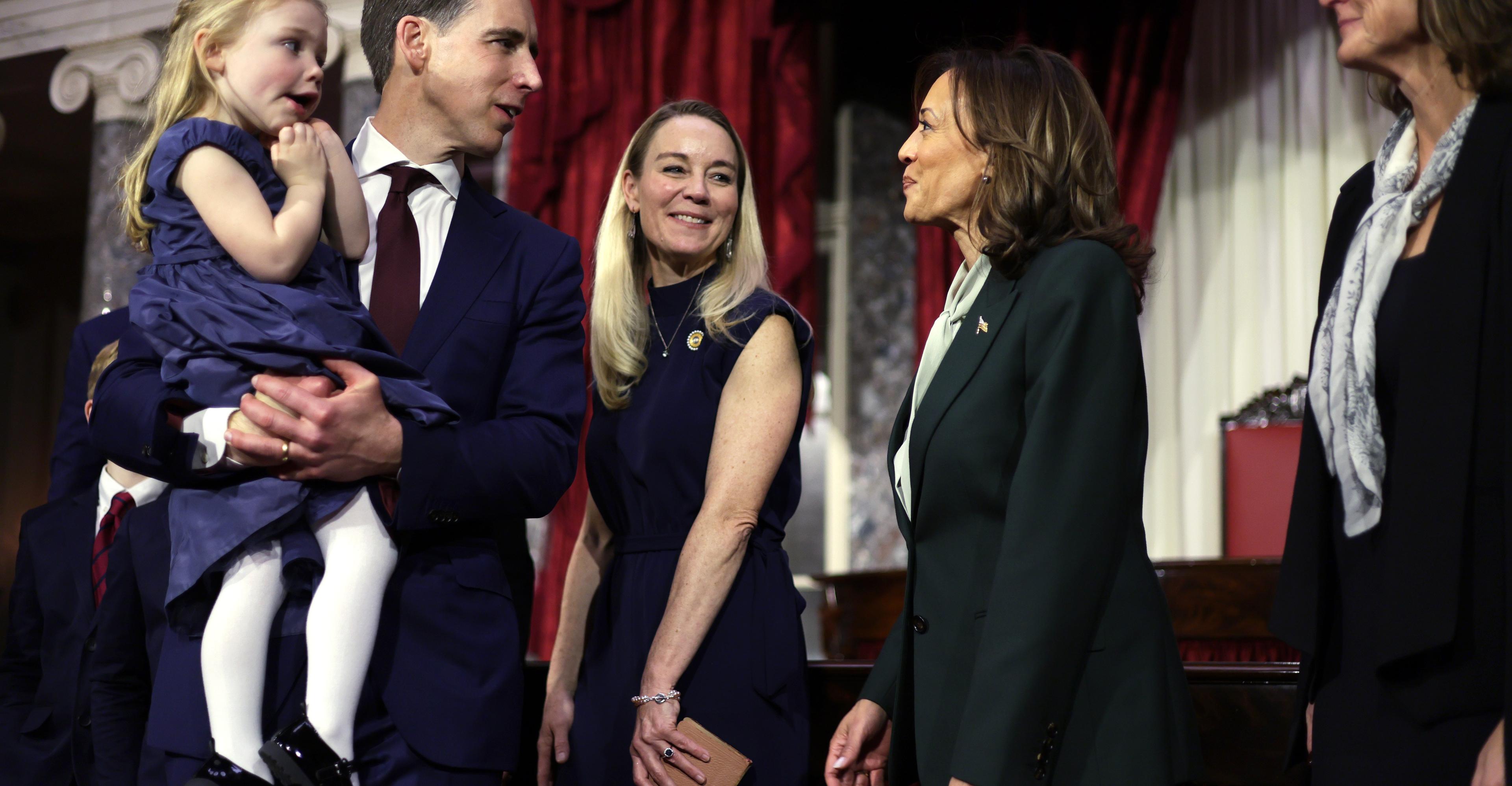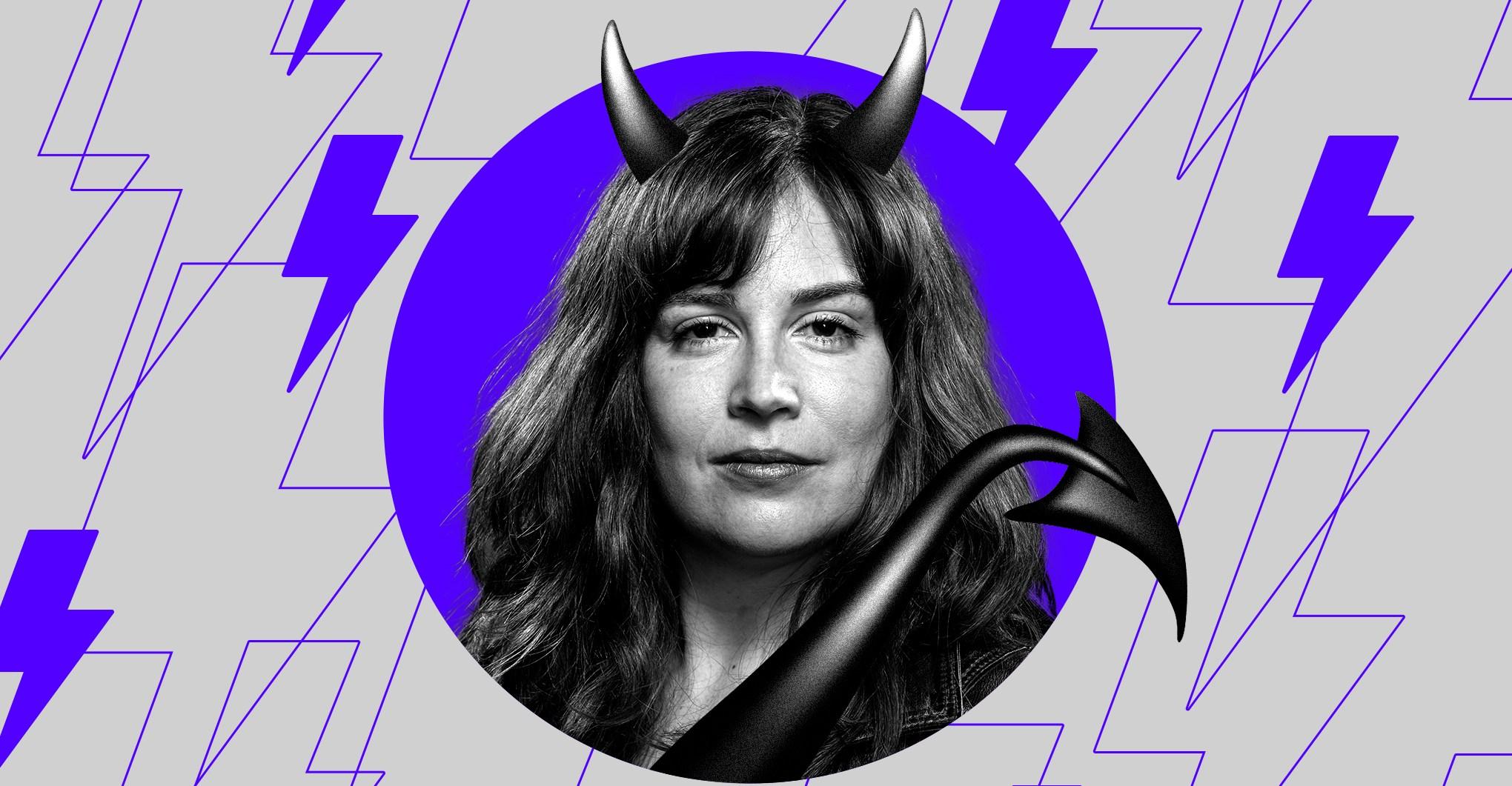From rap to the silver screen, it’s (still) 50 Cent’s world.


There are a few constants in the 50 Cent origin story: He’s the guy who raps one of the most recognizable opening hooks ever. He got shot nine times and lived to tell about it. For a time, he had every adolescent boy in America doing the G-Unit call-out, and he made a ton of money by investing in Vitaminwater (only to declare bankruptcy by 2015).
It’s a wildly incomplete account of the rapper’s life and career. 50 Cent, also known as Curtis Jackson, was everywhere in the last year, if you knew where to look. On television, season three of Power Book II: Ghost — one of three spinoffs of Power, a series that has established the rapper as a sought-after television producer with a small empire of shows either in production or development — broke viewership records for Starz’s streaming platform. His Final Lap Tour, a celebration of the 20th anniversary of his megahit debut album Get Rich or Die Tryin’, took him to 28 countries and sold more than a million tickets. He performed a guest verse on a single from Nas’s new record and did another verse for Nicki Minaj on Pink Friday 2 (Gag City Deluxe), which dropped at the end of the year.
If there’s one true constant in the story of 50 Cent, it’s his hustle. “The guy’s a machine; he always been like that, from the block to now,” fellow G-Unit member Tony Yayo told Billboard last year.
In the beginning, 50 Cent’s brand was rooted in his image as a former boxer and drug dealer who improbably survived being shot multiple times. The rapper was an early expert in self-mythology, building a darkly seductive narrative around his rise from street hustler to rap superstar. He cultivated an image of hip-hop supervillain, ready to go to war with anyone who crossed him, from Ja Rule to Jay-Z to Kanye West to Rick Ross and former fellow G-Unit member The Game. He’s been called a misogynist for his public comments and lyrics about women, faced backlash for anti-gay social media posts, and criticism for making supportive comments about Donald Trump and George W. Bush, when many Democrats detested the latter for the Iraq War and his socially conservative policies.
The rapper still never misses a chance to antagonize his perceived enemies: When singer Cassie recently came forward with sexual assault and abuse allegations against Sean “Diddy” Combs, 50 Cent spent days trolling the Bad Boy Records founder on social media, seeming to relish in a rival’s downfall.
Still, for someone with so many enemies, the rapper has shown a surprising ability to keep reinventing himself and thriving, even now, 20 years after he took over the rap game. Why is 50 Cent still here?
The answer is a case study in ambition and adaptability, a kind of narrative that, if it weren’t real, 50 might have made for TV.
Because 50 Cent is primarily known as one of the dominant musical artists of the early 2000s, the era of George W. Bush and the Iraq War, it can be tempting to lump him in with the general bleakness of that era of American history. To overgeneralize just a little bit: The culture was bad. The fashion was worse. The politics were catastrophic. And yeah, “In Da Club” was so ubiquitous that it was impossible to escape it. The song was No. 1 on the Billboard Hot 100 for nine long weeks. Poet and cultural critic Hanif Abdurraqib posted that he remembers its radio-saturation era as “maybe one of the handful of times I’ve ever felt entirely, completely suffocated by a rap song.”
“It really does feel like there was before 50 Cent and after 50 Cent,” says Julianne Escobedo Shepherd, a contributing writer at Pitchfork. “He was the perfect pop star for the Bush era. He was a rampant capitalist. There was a certain level of nihilism to his work, but he was also escapist, despite having a lot of very kind of dark, street narratives in his music. It just took over.”
The video for “In Da Club” came out on January 27, 2003, shortly before the release of 50 Cent’s first album, Get Rich or Die Tryin’. In the early scenes, Dr. Dre and Eminem, then already two of the biggest names in hip hop, are white-coated scientists in a high-security lab, working on the launch of a new secret weapon. 50 drops into the frame upside down from a ceiling bar where he’s been doing sit-ups. It wasn’t a coincidence that the rapper’s muscular body took center-screen. As he later told Men’s Health, 50 Cent had seen the way women reacted to R&B legend D’Angelo’s “Untitled (How Does It Feel)” video, and realized that sex appeal was an important way to draw in female fans who were a crucial constituency in hip hop fandom.
With “In Da Club” all over the radio and MTV, the album was primed to do numbers. According to SoundScan, which started tracking record sales in 1991, Get Rich or Die Tryin’ sold 872,000 copies in its first four days, making it the best-selling debut album they had ever recorded at the time. After “In Da Club,” another single from the album hit number one on the charts – “21 Questions” a sing-songy pop song so out of pocket that Dr. Dre tried to convince him shouldn’t be on the album, according to 50.
It’s possible now to locate in 50 Cent’s image — in both his personal brand and the narrative of his life — several trends that shaped rap in the years that followed. Though he wasn’t the only rapper to trade on his sexiness (see: LL Cool J), 50’s crossover appeal helped accelerate hip-hop’s transformation into a staple of mainstream pop culture with a larger fanbase, and it’s possible to see where that lineage has led us: We now live in an era of hip-hop where rappers aren’t afraid of dealing with the messier realms of emotions and feelings. The contemporary hip-hop scene is also dominated by female artists and their fans, many of whom came of age during 50’s era of rap superstardom and made the genre their own, despite the misogyny of the era.
Like Minaj, another rapper out of Queens, 50 Cent was a master at telling the story of where he came from and how it prepared him for rap world dominance. “He was such an impressive mythology maker,” Abdurraqib told Vox.
Orphaned at the age of 8 and raised by his grandmother, 50 Cent’s father wasn’t in his life, but his mother, Sabrina, left an indelible impression on him. There’s little information publicly available about how she died, but in 2003, he said that someone had drugged her drink and turned on the gas in her home, killing her. In 2012, he said that his mother had been a lesbian. He took up boxing at 11 and dealing drugs, like his mother had, at 12; by 19, he was serving a six-month sentence for drugs and gun charges in a boot camp program. A few years later, he started rapping, adopting the nickname “50 Cent” from an infamous stick-up kid from the Bronx, and was introduced by a friend to Run DMC’s Jam Master Jay, who taught him to write hooks and count bars.
Jackson was preparing to release his debut album with Columbia Records, The Power of the Dollar, when he was shot nine times with a 9 mm handgun in 2000. He survived, but a bullet fragment remained lodged in his tongue, changing the way he rapped. Columbia dropped him, but leaked copies of The Power of the Dollar circulated heavily among hip-hop fans, and “How to Rob,” a clever, reference-heavy single that outlined how the rapper planned to steal from some of hip-hop’s biggest stars, established him as a lyrical virtuoso with Napoleonic ambitions. His music made it to Eminem, who persuaded Dr. Dre to sign 50 Cent to Interscope Records.
Last year, Dr. Dre reflected on being in the studio with the upstart rapper as a producer for some of the songs on Get Rich or Die Tryin’. “He came in and every track I put up, he had something for it,” Dre said.
“He was the real deal. That sort of authenticity was really important at that time,” Escobedo Shepherd says. “You could literally hear it in his music because he rapped differently after he was shot.”
Two years later, 50 followed with a second album, The Massacre, which debuted at the top of the Billboard charts and sold 1.14 million copies in four days. In between albums, he released music with G-Unit, launched a clothing line, and became a shareholder in the company that then made Vitaminwater. “Few have out-hustled 50 Cent,” the New York Times noted in a 2004 piece listing the rapper’s many business deals. Sources close to the rapper said he’d “generated income in the $50 million range” in just one year.
50 Cent’s third album, Curtis, came out in 2007, the marquee event in the rap feud of the year. For months, he and Kanye West traded barbs over whose record would sell more copies; West even moved the release date of his third album, Graduation, up so it would come out on the same day as Curtis.
Curtis debuted at No. 2 on the Billboard charts, and both the number of albums sold and the critical reception suggested West had the better album. Abdurraqib says that the feud was obviously strategic on 50’s part, as a way to boost album sales. “He was never going to outsell Graduation,” he says. Still, 50 Cent’s era of rap domination seemed over. He’d made enough enemies and employed enough braggadocio that plenty of people seemed ready to declare his downfall. The rapper’s highly publicized bankruptcy in 2015 only bolstered that impression.
But as any pugnacious New York entrepreneur will tell you, sometimes declaring bankruptcy is a way of protecting your financial future. Plus, 50 Cent had a few other projects up his sleeve.
In 2005, 50 Cent starred in a semi-autobiographical film about his life, also called Get Rich or Die Tryin’. The film was a critical flop; it received 17 percent on the film review site Rotten Tomatoes. Writer Zadie Smith, in a tongue-in-cheek review for the Telegraph, noted the rapper’s love for mafia-movie aesthetics, which would define both his music videos and later television work: “I love that you watched Goodfellas and Scarface, like, a million times and decided to ditch all that narrative arc crap and get straight to the point with a minimalist voice-over,” Smith wrote.
Undeterred, 50 Cent took tips from producers he met in Hollywood and built his portfolio. In 2009, he founded Cheetah Vision, a production company that produced action thrillers for foreign markets and video-on-demand services. He also connected with Courtney A. Kemp, a former writer for The Good Wife. With Kemp writing, and 50 Cent offering knowledge gleaned from his formative years in Queens, the two developed Power, a drama starring Omari Hardwick as a drug dealer named James St. Patrick (alias Ghost) trying and failing to break out of a life of crime and make a clean living as a nightclub owner.
The show built a loyal following over six seasons and became one of Starz’s most watched shows. In marking the final season, the Los Angeles Times hailed the show as “a powerhouse of the premium cable landscape,” which helped put the streaming service on the map. Power, the article noted, hadn’t received the same amount of mainstream media attention as its more popular rival, the Fox drama Empire, but its audience had grown consistently from its first season in 2014 through its end in 2020, leading to multiple spinoff series with millions of viewers, along with multiple NAACP Image Awards and two People’s Choice Awards. 50 Cent, the series’ executive producer, appeared in the series as Ghost’s foil, Kanan, and later teamed up with Kemp on spinoffs including Power Book III: Raising Kanan, which is based loosely on the rapper’s early life.
It’s impossible not to feel 50 Cent’s influence over the shows, even those that don’t deal explicitly with the details of his life: They are reflected in the aesthetic and the rap-heavy soundtrack, which have carried into his other work as well. The rapper also executive produces the show BMF based on the real-life story of Demetrius “Big Meech” Flenory and the Black Mafia Family.
While he was busy building a TV empire, something else interesting happened: The culture started coming back around to his music. Or maybe it’s just that millennials, now the largest generation of adults on earth, are getting older and more nostalgic for the songs that defined our youth. In 2020, the video for “In Da Club” became the second rap video of the pre-YouTube era to reach 1 billion views on the streaming platform (behind only Eminem’s “Without Me”) — and it remains a staple of workout classes and dance floors to this day. In 2022, 50 Cent, along with Dr. Dre, Eminem, Snoop Dogg, Kendrick Lamar, and Mary J. Blige, performed the Super Bowl halftime show, a milestone moment for the genre.
In a way, his chameleon-like ability to reinvent and reintroduce himself for a new era shouldn’t come as a surprise. 50 Cent is a longtime fan of Robert Greene’s The 48 Laws of Power, a Machiavellian self-help book that advises people on how to get what they want. The 48th law is all about the importance of being flexible and learning to change with the times. “Keep yourself adaptable and on the move,” Greene writes in the book. “Accept the fact that nothing is certain and no law is fixed.”
The rapper obviously saw something in his advice. Never one to let a good opportunity go to waste, the two even teamed up to write a book together. They called it The 50th Law.
14 killed, 20 wounded in bus-van collision in Jhang
- 6 hours ago
NA Speaker, Indian FM meet on sidelines of Khaleda Zia’s funeral in Dhaka
- 9 hours ago
World begins to bid goodbye to 2025 with fireworks and icy plunges
- 6 hours ago
Russia will win in Ukraine, Putin says in New Year address
- 9 hours ago
Any breach of territorial integrity to face decisive response, says COAS Munir
- 9 hours ago

The year of ‘decentering men’
- 21 hours ago

In America, surviving a disaster increasingly depends on what you can afford
- 21 hours ago

GOG’s Steam-alternative PC game store is leaving CD Projekt, staying DRM-free
- a day ago
Spinner Rashid Khan to lead Afghanistan in Twenty20 World Cup
- 8 hours ago

Turn your PC into a Super Nintendo with Epilogue’s new USB dock
- a day ago

Why conservatives should pay parents to stay home
- 21 hours ago

Zohran Mamdani on his mayoral transition and what comes next
- 21 hours ago





